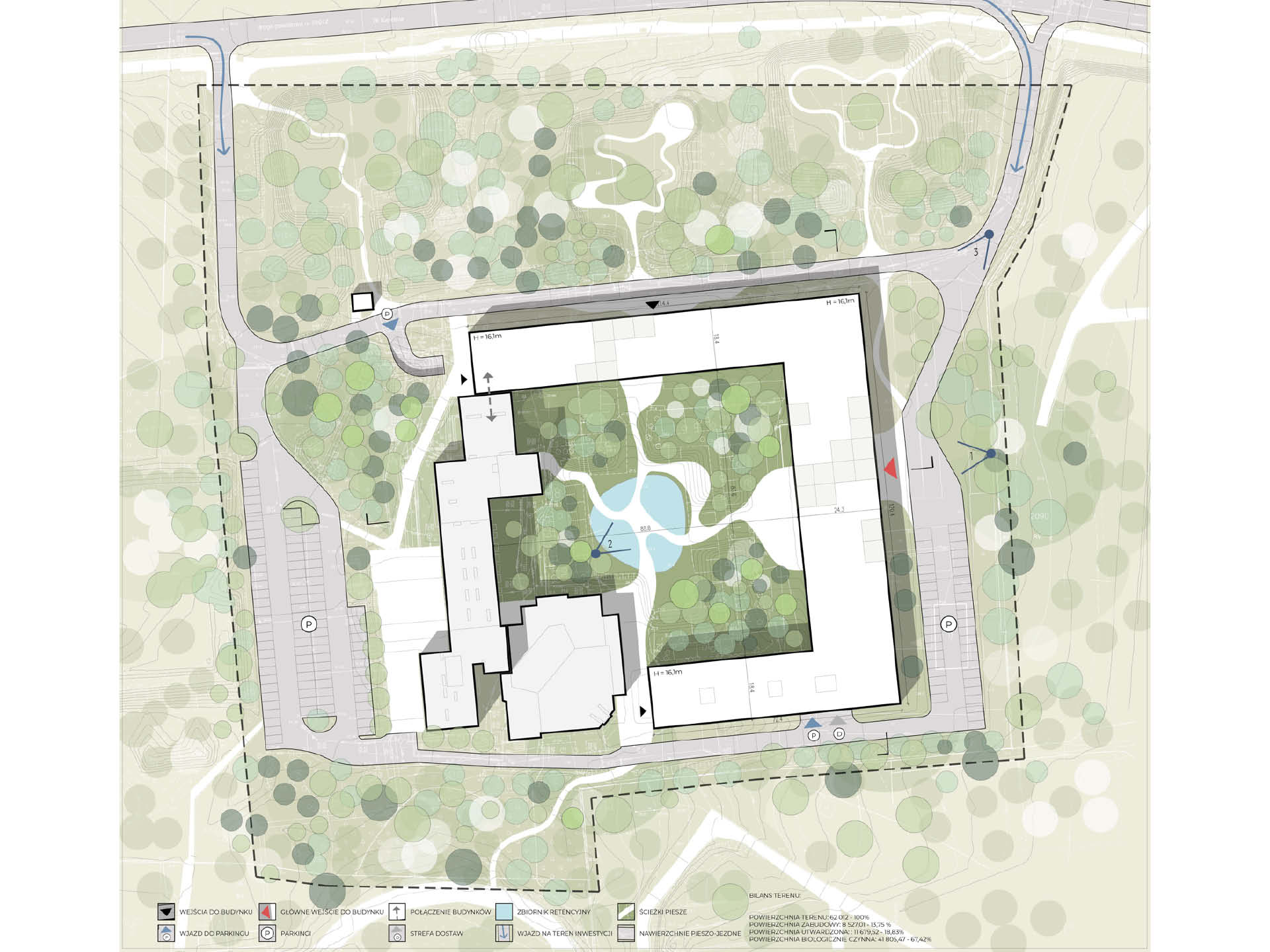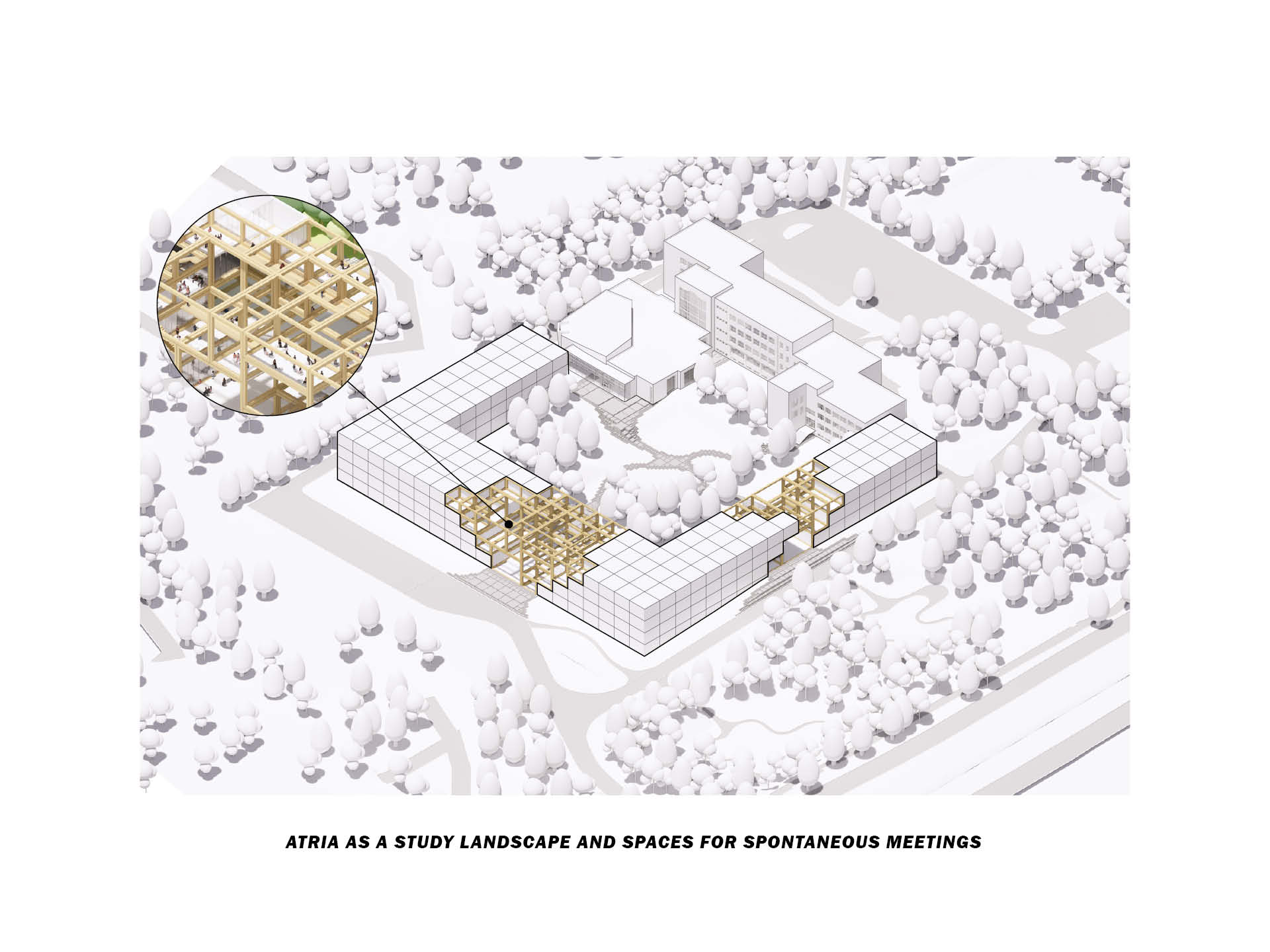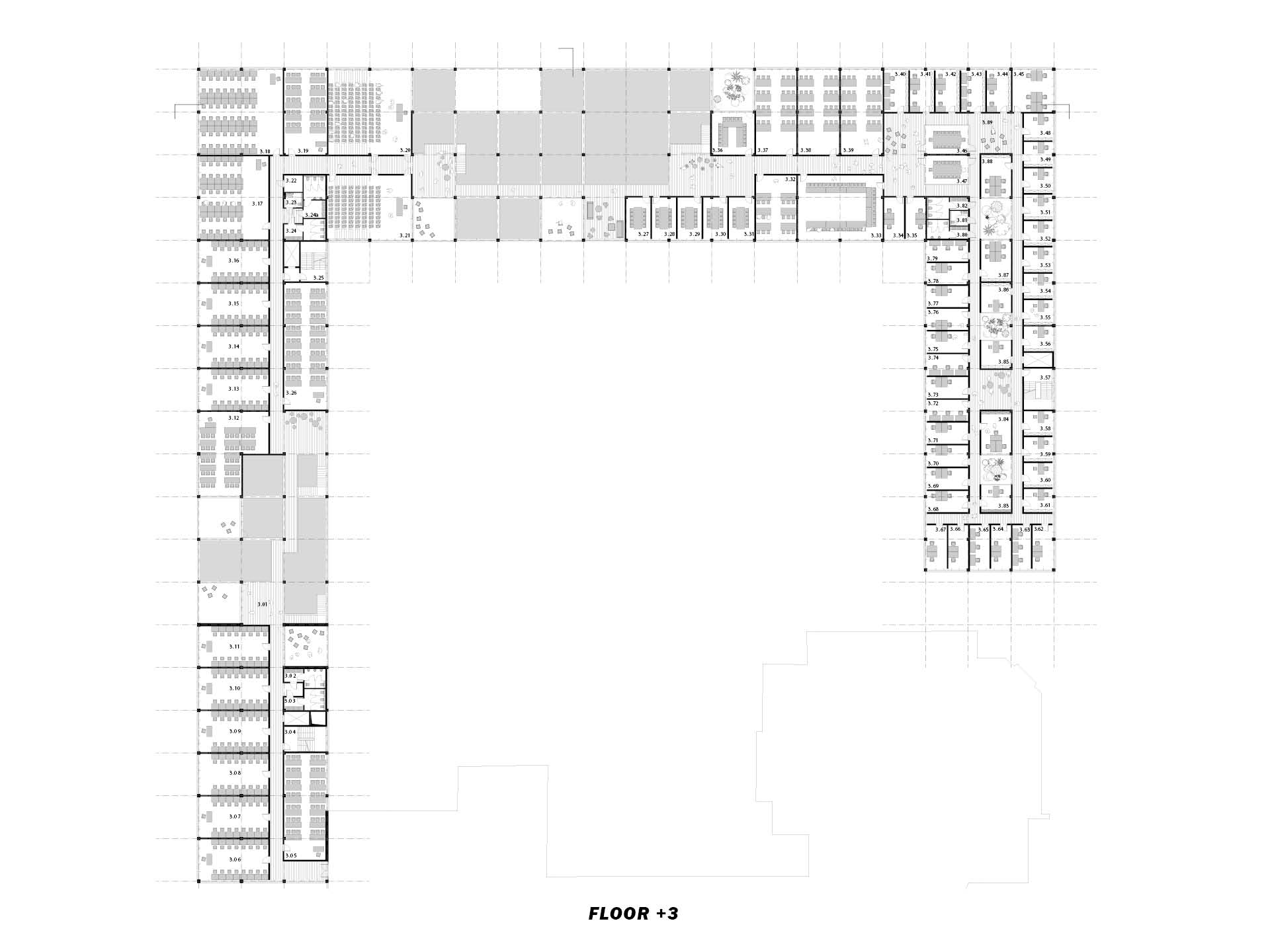THE STUDY CANYON
Program: |
Architecture - Education |
Size: |
20.900 m2 |
Location: |
Szczecin, PL |
Client: |
West Pomeranian University of Technology in Szczecin |
Team: |
Geoffrey Eberle, Magdalena Mróz, Bartosz Dendura, Gabriella Mackenzie, Clara Costa, Martyna Mądry, Katarzyna Obara, Lukas Patrick Olma, Sylwia Chudzik |
Collaborators: |
studio4space |
Year: |
2023 |






























